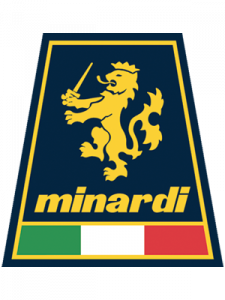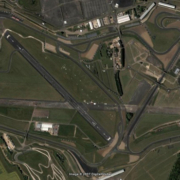F1 – Silverstone: L’analisi tecnica dell’Ing. Gabriele Tredozi
Archiviato Magny Cours il paddock della Formula 1 è pronto a trasferirsi sul circuito in cui è nato il Mondiale, il tracciato che ha fatto e fa tutt’ora la storia dell’automobilismo: Silverstone
L’appuntamento francese ci ha consegnato una Ferrari ancora più forte che è tornata al comando della classifica pilota grazie alla vittoria del suo pilota Felipe Massa davanti a Kimi Raikkonen e allo scozzese della Red Bull David Coulthard.
Come di consueto andiamo a conoscere tutti i segreti della pista inglese grazie all’esperienza dell’Ing. Gabriele Tredozi: “Silverstone è un tracciato completo, a livello di Barcellona, che richiede un carico aerodinamico medio – basso. Proprio per le sue caratteristiche di pista veloce l’efficienza è molto importante, così come una giusta ripartizione dei pesi, il baricentro basso e la una monoposto molto rigida. E’ un tracciato in cui le qualità della vettura risaltano in particolar modo e in cui i freni non sono sollecitati.

La maggior parte delle curve è veloce e per questo è fondamentale avere una vettura stabile senza sovrasterzo: il complesso “Becketts” e la “Bridge” sono curvoni molto veloci e quindi molto importati per segnare un buon riscontro cronometrico. Caratteristica altrettanto importante è la trazione, soprattutto nella parta finale del tracciato: bisogna uscire bene per avere una buona accelerazione.
Le gomme sono molto sollecitate, in particolar modo quelle di sinistra in quanto la maggior parte delle curve veloci si trovano a destra. Proprio per questo aspetto la tattica di una sola sosta non è consigliabile e la maggior parte dei team opterà per i due stop, nonostante la corsia box sia relativamente lunga.
I punti in cui si potranno vedere dei sorpassi sono fondamentalmente due: alla prima curva, la Copse, anche se non è certamente facile in quanto c’è il rischio di perdere carico, e alla “Stowe”, la variante a destra dopo le “Maggotts-Becketts-Chapel” da percorrere in quarta marcia a 199 km/h. Dal punto di vista fisico del pilota Silverstone è molto dura, infatti il collo è sottoposto ad alti “G laterali”: alla prima variante e alla Bechetts si arriva anche a 5G.
Proprio per queste caratteristiche la messa a punto non è certamente facile ed è molto importante ottimizzare al meglio la macchina: questo da un maggior margine di miglioramento.

Filed the Magny Cours paddock of Formula 1 is ready to move on the circuit in which it was born the World Cup, the path that has done and is still the story of the motorsports: Silverstone
The appointment French gave us a Ferrari even stronger than is returned to the command pilot of the league thanks to the victory of his pilot Felipe Massa ahead of Kimi Raikkonen and Scottish Red Bull’s David Coulthard.
As usual we know all the secrets of the English thanks to the runway of Eng. Gabriele Tredozi: “Silverstone is a complete path, at Barcelona, which requires a load aerodynamic medium – low. Precisely because of its fast track the efficiency is very important, as well as a just distribution of weights, the centre of gravity low and a single rigid. It ‘a path in which the qualities of the car stand out in particular and in which brakes are not particularly stressed
It’s ‘characterized by very fast curves and so it is vital to have a stable car without sovrasterzo: the complex Becketts and Bridge curvoni are very fast and then very imported to mark a good feedback cronometrico. Feature equally important is the traction, especially in the final start of the route which he places on the curve to do in speeding up and leading on the final straight. We must try to get out well for a good acceleration.
The grip asphalt is quite good even if the tires are still very solicited, especially those left since most of fast curves are right. Precisely for this aspect the tactics of a single stop is not advisable and most of the team will choose for two stop, despite the pit lane is relatively long.
Given the speed to overtake other is not easy also because we must be careful not to lose the load following the wake. The points which will see the overtaking are basically two: the first curve, Copse, although it is certainly not easy, and the “Stowe”, the variant right after the Maggotts-Becketts-Chapel to go into fourth gear 199 km / h. From the point of view visico pilot Silverstone is very hard, because the hill is called a high lateral G: to the first corner touching the 5G, while the Bechetts it comes to 5G
Precisely for these features the development is certainly not easy and it is very important to optimize the best car: this from a greater margin for improvement.



